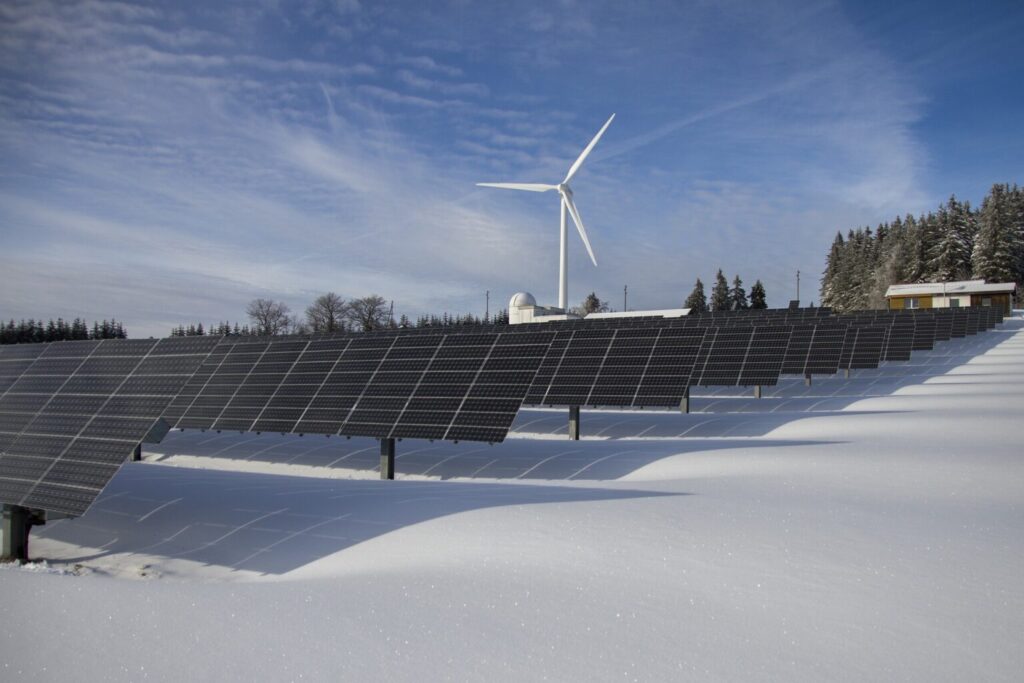- Investing in ecological alternatives for everyday life is becoming increasingly necessary;
- Some minerals are the key to manufacturing essential equipment for the green transition;
- With high demand, problems with supply, prices and production may begin to emerge.
With climate change that has been bringing direct catastrophic consequences to the population’s daily lives, whether through high temperatures or increasingly recurring natural disasters, the population is beginning to open its eyes to the need to seek sustainability through the green transition in energy production. and industrial.
The green transition is a concept established in the UN-Habitat Strategic Plan 2020-2023, which basically consists of changing society to transform the world, especially the urban environment, into a more sustainable place, bringing quality of life to everyone and combating climate changes.
These climate change strategies are not easily implemented, as they do not only depend on individual initiatives, but collective ones and in different areas of society, whether using public transport or adopting clean energy generation strategies.
For the green transition, it is necessary to adopt strategic and sustainable alternatives that have a real impact on the environment. Whether in electric car batteries, which replace combustion pollutants, or in the manufacture of solar panels, most of the technologies necessary for a more ecological world require minerals.

Essential Technologies for Green Transition and the Minerals Required in Their Production
For each item produced, different minerals, produced by different countries, are required. Some of the key essential equipment for green transition includes:
- Electric car batteries. The most common minerals for their production are cobalt, lithium, nickel, aluminum, copper, manganese, graphite, iron, rare earths, niobium, and others. They are combined to form the raw material of this battery, storing the energy necessary for the engine to function.
The electric car production industry has been growing steadily. In the United States, for example, the year 2023 represented a record in electric car sales, reaching almost 300,000 vehicles for the first time.
In the first quarter of 2023, the world’s best-selling car model was an electric car, the Tesla Model Y.
Furthermore, in 2022 in China, 23% of automobiles sold were electric. This value becomes very significant considering that the country has become the largest automobile market in the world, surpassing Japan.
- Transmission lines are essential for the transport of electrical energy and are composed of towers, lightning arresters, guard cables, insulators, and metallic conductive wires. Additionally, there are essential conductor cables for electrical transport in many technologies.
All of this can be produced through copper, aluminum, and iron.
- Wind turbines are essential for generating kinetic energy, important for a more environmentally friendly and less aggressive energy production.
The blades that rotate to collect wind energy can be produced from steel, which is a mixture of iron and carbon. The back of these blades is responsible for containing the main wind generator elements, most of which are produced with rare earths, cobalt, copper, aluminum, and zinc.
- Photovoltaic solar panels become protagonists when it comes to green energy generation. Producing energy from sunlight, the panel structure contains various minerals in its production.
The frame is made of aluminum. The glass contains carbon, limestone (a mixture of calcite and aragonite), and iron. The photovoltaic cells are produced with silicon, which generates energy after coming into contact with solar particles.
The 13 key minerals for green transition and the largest producing countries
Considering the main equipment necessary for green transition, it is possible to highlight the 13 key minerals needed in the production of these items and their largest global producers.
- Cobalt: Cobalt is a transition metal widely used in paint manufacturing and metal alloys. The Democratic Republic of Congo can be considered the largest producer of the ore, accounting for 58% of global production in 2017.
On the other hand, China stands out as a major refiner of the mineral. It was responsible for refining nearly 70,000 tons of the 117,000 tons produced worldwide in 2017.
2. Nickel: Nickel, like cobalt, is also widely used in the manufacture of metal alloys, as it is part of stainless steel. According to a 2023 report from the US Geological Survey, the largest producing countries and territories of nickel in 2022 were Indonesia, the Philippines, Russia, New Caledonia, and Australia.
In terms of identified reserves, the countries with the largest reserves of the mineral are Australia, Indonesia, Brazil, and Russia.
3. Lithium: Batteries made with lithium are widely used in electronic devices such as cell phones, computers, and electric cars. Chile, Bolivia, and Argentina together hold 60% of the world’s lithium reserves, considered the Lithium Triangle.
Australia is the second largest producer globally, behind Chile, which produces almost half of the lithium used worldwide.
4. Aluminum: Aluminum is a versatile metal, used in aircraft structures as well as window partitions. As it is a product found in many areas of the world, several countries produce aluminum.
China ranks first among the largest producers of aluminum, manufacturing 37 million tons in 2020. Russia ranks second, with production of 3.9 million tons still in 2020.
Ranking third, India produced 3.6 million tons. Fourth, Canada produced 3.1 million tons in 2020.
5. Copper: Copper is the primary choice when it comes to electrical conductors and green energy in solar panels and wind turbines. In 2021, Chile was the largest producer of the mineral, reaching a scale of 5.6 million tons.
In Peru, production was 2.2 million tons, and in China, 1.8 million tons, alongside the Democratic Republic of Congo with approximately the same amount as the Chinese country.
6. Manganese: This metal can be combined with iron in the production of steel for metal alloys. Additionally, it facilitates the conversion of sunlight into energy. In 2022, South Africa‘s manganese production was 7.2 million tons. The country also has the world’s largest reserve of the metal, with 640 million tons.
Gabon ranked second, with production of 4.6 million tons, followed by Australia, with 3.3 million tons.
7. Graphite: This is another important mineral for green transition in electrical conduction. In 2022, China ranked first in global production, with 850,000 tons, representing 65% of worldwide mining.
Madagascar, which ranked fifth in graphite production in 2021, ranked second in 2022, with production of 170,000 tons. In third place was Mozambique, with 110,000 tons, and Brazil in fourth, with 87,000 tons.
8. Iron: Iron is also used on a large scale, not only for equipment necessary for green transition, but in other aspects of society, such as construction, for example.
Australia was the largest producer of the metal in 2022, with 880 million tons of usable ore. Brazil ranked second, with 410 million tons. Next was China, with production of 380 million tons of usable ore.
9. Rare Earths: The name comes from the fact that rare earths are elements found in nature mixed with ores and have a complex extraction process. The largest reserves discovered by 2022 are in China, with 44 million tons of rare earths.
Vietnam‘s reserves rank as the second largest, with 22 million tons. The country estimates producing about 2 million tons by 2030. Brazil and Russia vie for third place, with reserves of approximately 21 million tons. In terms of production, Russia leads Brazil and Vietnam, with 2.6 million tons in 2022.
10. Niobium: Being an excellent conductor of energy, niobium is very resistant to heat and corrosion. In 2022, the largest producing countries were Brazil, Canada, Congo, and Russia.
The world’s largest reserves can also be found in these countries.
11. Zinc: With a production of 4.2 million, China topped the list among zinc-producing countries in 2022, holding the first position for several years, also being a major consumer of the mineral.
Peru and Australia ranked second and third, with productions of 1.4 and 1.3 million tons, respectively.
12. Limestone: Limestone is a mineral composed mainly of calcite and aragonite.
In 2022, the largest markets in the limestone industries were Saudi Arabia, India, Oman, Malaysia, Belgium, Spain, and Russia.
13. Silicon: Also known as silica, it is found in nature in rocks, sands, clays, and soils.
In 2022, the largest silicon producers were China, Russia, Brazil, Norway, and the United States. There are no exact estimates of reserves, as demand is much lower in relation to it.
Main Issues, Demand, Supply, and Price of these Minerals
Minerals are not infinite resources, and with the high demand for a green transition, problems in demand, supply, availability, and price begin to arise in the market for these products.
Issues regarding these materials in the production of electric cars, which grow exponentially each year, are the most concerning. Despite being an ecological alternative to combustion cars, which are much more polluting, attention must be paid to the ways in which the minerals needed for their manufacture are extracted and in their quantities so that environmental preservation does not become the destruction of the environment.
Some companies producing minerals used in the construction of electric car batteries, due to high market demand, have begun to search for these raw materials on the ocean floor, which could potentially cause habitat degradation and significant loss of biodiversity in the future.
Like most minerals needed for a greener world, nickel also becomes increasingly necessary in the energy sector, prompting companies to increase their investments in the extraction of this mineral.
High demand can pose many risks. According to the International Energy Agency, meeting the mineral needs for a global green transition sustainably could become a challenge. If there are not enough products, prices may rise, making the energy transition more difficult.
Finally, countries with less supply of these minerals become dependent on the largest producers to enter the green transition. The IEA report pointed out that countries considered sources of supply have not diversified in recent years.
On the other hand, some minerals such as lithium and cobalt have recently experienced a price drop. This is mainly because companies needing these minerals have started to develop batteries that can replace these minerals with others in their composition.
This price drop can be seen as a positive from an environmental standpoint since – as mentioned above – such minerals are important for the green transition as they are part of the composition of electric cars, solar panels, and wind turbines.
The Geopolitical Issue Critical Minerals Pose to US, EU, and China National Security
The geopolitical importance of access to these minerals by countries becomes increasingly evident, as most of them are committing to reducing greenhouse gas emissions, and the lack of these minerals can delay the green transition.
Thus, each nation develops a list of the most important minerals for it, considering its industrial needs and/or risk of scarcity. These lists change over the years, as the industrial needs of each country may also change. In general, there are estimates that the search for these minerals will double by 2040.
Below, you can see a table with the minerals necessary for China, the European Union, and the United States, according to documents released by themselves.
| Mineral | United States | European Union | China |
| Aluminum/Bauxite | Yes | Yes | Yes |
| Antimony | Yes | Yes | Yes |
| Cobalt | Yes | Yes | Yes |
| Copper | Yes | Yes | Yes |
| Fluorite | Yes | Yes | Yes |
| Graphite | Yes | Yes | Yes |
| Lithium | Yes | Yes | Yes |
| Nickel | Yes | Yes | Yes |
| Rare Lands | Yes | Yes | Yes |
| Tungsten | Yes | Yes | Yes |
| Arsenic | Yes | Yes | Não |
| Barite | Yes | Yes | No |
| Beryllium | Yes | Yes | No |
| Bismuth | Yes | Yes | No |
| Germanium | Yes | Yes | No |
| Hafnium | Yes | Yes | No |
| Magnesium | Yes | Yes | No |
| Manganese | Yes | Yes | No |
| Niobium | Yes | Yes | No |
| Platinum | Yes | Yes | No |
| Tantalum | Yes | Yes | No |
| Titanium | Yes | Yes | No |
| Vanadium | Yes | Yes | No |
| Tin | Yes | No | Yes |
| Zirconium | Yes | No | Yes |
| Phosphor | No | Yes | Yes |
| Cesium | Yes | No | No |
| Chrome | Yes | No | No |
| Indium | Yes | No | No |
| Rubidium | Yes | No | No |
| Samarium | Yes | No | No |
| Tellurium | Yes | No | No |
| Zinc | Yes | No | No |
| Boron | No | Yes | No |
| Coal Coke | No | Yes | No |
| Feldspar | No | Yes | No |
| Gallium | No | Yes | No |
| Helium | No | Yes | No |
| Phosphate Rock | No | Yes | No |
| Scandium | No | Yes | No |
| Silicon | No | Yes | No |
| Strontium | No | Yes | No |
| Gold | No | No | Yes |
| Iron ore | No | No | Yes |
| Molybdenum | No | No | Yes |
| Potash | No | No | Yes |
| Uranium | No | No | Yes |
The European Union list has more than 30 strategic minerals. They classified them as crucial products for the European economy, as in addition to being used in current technologies, industry and the environment, they are also important for everyday life.
China exercises a certain dominance in this regard, as it can be considered one of the largest producers of a large part of the essential minerals for the European Union and the USA. The country dominates 60% of the global rare earth market and 13% of the lithium market. Furthermore, the Asian nation also refines 35% of the world’s nickel, 58% of lithium and 70% of cobalt.
The United States, on the other hand, seeks to increase its production of raw materials from these minerals in the coming years, reducing its dependence on other countries that import such products.














Be First to Comment